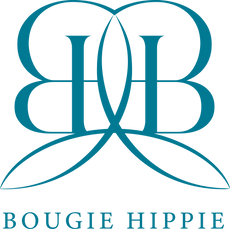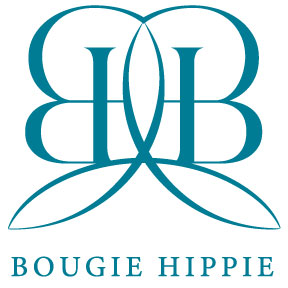Have you ever scrolled through Pinterest and seen those outfits? You know the ones. They have long, flowing skirts, floral patterns, and layers of cool jewelry. You probably thought it looked awesome but didn’t know what to call it. That style has a name, and its story is more interesting than just the clothes.
You’re likely wondering, what does bohemian mean in fashion? At its core, it’s about a feeling of freedom, creativity, and living life on your own terms. This style isn’t about following strict rules; it’s a way to show off your personality without saying a word. Understanding bohemian fashion is about understanding a lifestyle that values art over money, experiences over possessions, and individuality over conformity. Today, the look is everywhere from festivals to weddings, from casual streetwear to curated brands like Bougie Hippie, which put a modern spin on the aesthetic.
Their collections embody a paradox: the effortless vibe of hippie style balanced with the elevated luxury of bougie fashion. It’s free-spirited, but never sloppy; laid-back, but refined.
The Story Behind Bohemian Style: More Than Just Clothes
To really get what boho clothing is all about, we have to travel back in time. It began in 19th-century Paris after the French Revolution, when a new group of young artists, writers, and musicians emerged. They were unconventional, creative, and often broke. Instead of chasing wealth, they chased ideas, experiences, and freedom.
Their clothes reflected this mindset. They wore secondhand or repurposed garments layered for warmth and effect, with no concern for polished trends. Their lifestyle was a quiet rebellion against the rigid, material-focused world of the upper classes. Even the word bohemian came from the French association with the Romani people, thought to have come from Bohemia, a region in central Europe.
This early bohemian movement was heavily influenced by Romanticism, which celebrated individuality, emotion, and art. For these creatives, clothing became a visual manifesto: a way of saying “I live differently.” Their layered outfits, mismatched fabrics, and handmade touches embodied a freedom that was as much philosophical as it was fashionable.
Bohemian Fashion Through the Decades
The bohemian aesthetic didn’t stay stuck in the 1800s. It reemerged at key cultural moments, evolving along the way.
-
1960s–70s Hippie Movement: This was the most famous revival. Young people protested war, promoted peace and love, and turned bohemian fashion into a cultural symbol. Think tie-dye shirts, bell-bottoms, peasant blouses, and flower crowns. Music festivals like Woodstock immortalized the look.
-
2000s Boho-Chic: Style icons like Sienna Miller and Kate Moss brought a polished version of bohemian fashion into the mainstream. Flowy dresses paired with ankle boots, oversized hobo bags, and layered jewelry became staples. It was less counterculture, more carefully styled—almost bougie before the word stuck.
-
Today’s Modern Boho: Social media, music festivals like Coachella, and brands such as Bougie Hippie have given the bohemian aesthetic fresh life. Today’s version often lives in paradox: hippie in its roots, bougie in its polish. The result is a style that feels authentic but elevated, easygoing yet photo-ready.
Every revival kept the core values the same: freedom, expression, and connection to nature. What changed was how these values translated into clothing for each generation.
Key Elements of the Boho Wardrobe
So, what actually makes an outfit bohemian? Here are the defining characteristics:
-
Flowing Silhouettes: Maxi dresses, oversized tunics, and billowy blouses are staples. They don’t hug the body, they move with it.
-
Natural Fabrics: Linen, cotton, suede, and leather dominate. They feel authentic, sustainable, and comfortable.
-
Earthy Palette: Browns, creams, olives, and rust tones set the foundation, often accented with jewel tones like burgundy or turquoise.
-
Rich Prints: Paisley, florals, tribal motifs, and eclectic global patterns are mixed together unapologetically.
-
Layering: Crochet vests, kimonos, scarves, and stacked jewelry create depth and individuality.
-
Handmade Details: Embroidery, beading, macrame, and crochet transform clothing into wearable art.
In today’s scene, these same elements get an upgrade. Browse Bougie Hippie’s collection and you’ll find flowy silhouettes cut from luxe fabrics, earthy tones styled with bold metallic accents, and patterns that feel as refined as they are playful. The vibe is boho at its core, but bougie in its execution.
Different Flavors of Boho
One of the best things about boho fashion is how adaptable it is. You don’t have to commit to one version—there are several styles to explore:
-
Boho-Chic: Polished, modern, and editorial-ready. Think designer jeans with a fringed jacket or a flowy dress with leather boots.
-
Hippie-Boho: Festival-ready and true to the 60s and 70s roots. Tie-dye, bell bottoms, flower crowns, and peace sign jewelry dominate.
-
Romantic-Boho: Soft, dreamy, and feminine. Lace dresses, pastel tones, and Victorian-inspired ruffles define the look. Perfect for bridal showers or garden parties.
-
Eclectic-Boho: A fearless mix of global influences and vintage finds. One outfit might feature a kimono, patchwork jeans, and layered beads from different cultures.
This flexibility is why bohemian fashion continues to thrive. Whether you lean toward the dreamy side of Romantic-Boho or the festival vibe of Hippie-Boho, there’s a lane for everyone.
How to Build Your Own Bohemian Wardrobe
Getting into boho fashion doesn’t require a complete closet overhaul. Start small and build from there:
-
Accessories First: Jewelry, scarves, hats, and bags can instantly add a boho vibe to a simple outfit.
-
Thrift and Vintage Shops: They’re treasure troves for authentic, one-of-a-kind pieces.
-
Signature Staples: Invest in a few high-quality items, like a floral maxi dress, flared jeans, or a suede vest, that you can wear again and again.
-
Mix Old and New: Pair vintage finds with modern boho brands like Bougie Hippie to balance authenticity with fresh styling.
The key is patience. Building a wardrobe that feels true to you takes time. But that’s part of the fun discovering pieces that resonate with your personality and lifestyle.
Accessorizing the Boho Way
Accessories often make or break a boho look. Here’s what to keep in mind:
-
Jewelry: Layer necklaces, mix metals, and embrace natural stones.
-
Bags: A fringed crossbody, oversized hobo bag, or embroidered tote adds instant boho energy.
-
Shoes: Ankle boots, sandals, or espadrilles keep things grounded and comfortable.
-
Hats & Hair: Wide-brimmed hats, headbands, or even flower crowns capture the carefree spirit.
A single Bougie Hippie statement piece, like a bold patterned dress or fringed jacket, can also serve as the centerpiece of your outfit. Build around it with layered jewelry and vintage-inspired accessories to complete the look.
Boho for Every Occasion
One of the biggest myths about bohemian fashion is that it’s only for festivals or casual weekends. The truth? It works almost anywhere.
-
Weddings: A lace or floral maxi dress makes a gorgeous guest outfit. Jewel-toned fabrics elevate the look for cocktail weddings.
-
Vacations: Lightweight cover-ups, flowy skirts, and tropical prints are perfect for resort wear.
-
Workwear: Subtle boho pieces, like a patterned blouse or statement jewelry, can blend into more structured office outfits.
-
Everyday Wear: A tunic with jeans or a loose dress with ankle boots is as comfortable as it is stylish.
That versatility is why boho fashion endures. It adapts to the moment while staying true to its free-spirited roots.
It’s More Than Fashion, It’s a Mindset
Ultimately, bohemian style isn’t just about what you wear, it’s about how you live. It reflects values like freedom, creativity, sustainability, and individuality. It’s a rejection of rigid rules and a celebration of expression. Wearing bohemian clothing today, whether it’s a vintage thrift find or a modern piece from Bougie Hippie, is a way of honoring that legacy. It says you’re not afraid to live life on your own terms. You value comfort, artistry, and authenticity over fitting in.
Conclusion
So, what does bohemian mean in fashion? It’s a rich, expressive style with deep counter-culture roots. From 19th-century Paris artists to 70s hippies to today’s boho-chic revival, the core has always been about freedom, individuality, and connection.
The typical boho style is defined by flowing silhouettes, natural fabrics, earthy tones, and handmade details. Whether you’re layering jewelry, pairing a maxi skirt with boots, or pulling a bold patterned dress from Bougie Hippie’s collection, the goal is the same: expressing who you are. Get some boho flared pants. More than a fashion trend, bohemian style is a lifestyle, a timeless reminder that life is richer when lived creatively, authentically, and unapologetically free.


